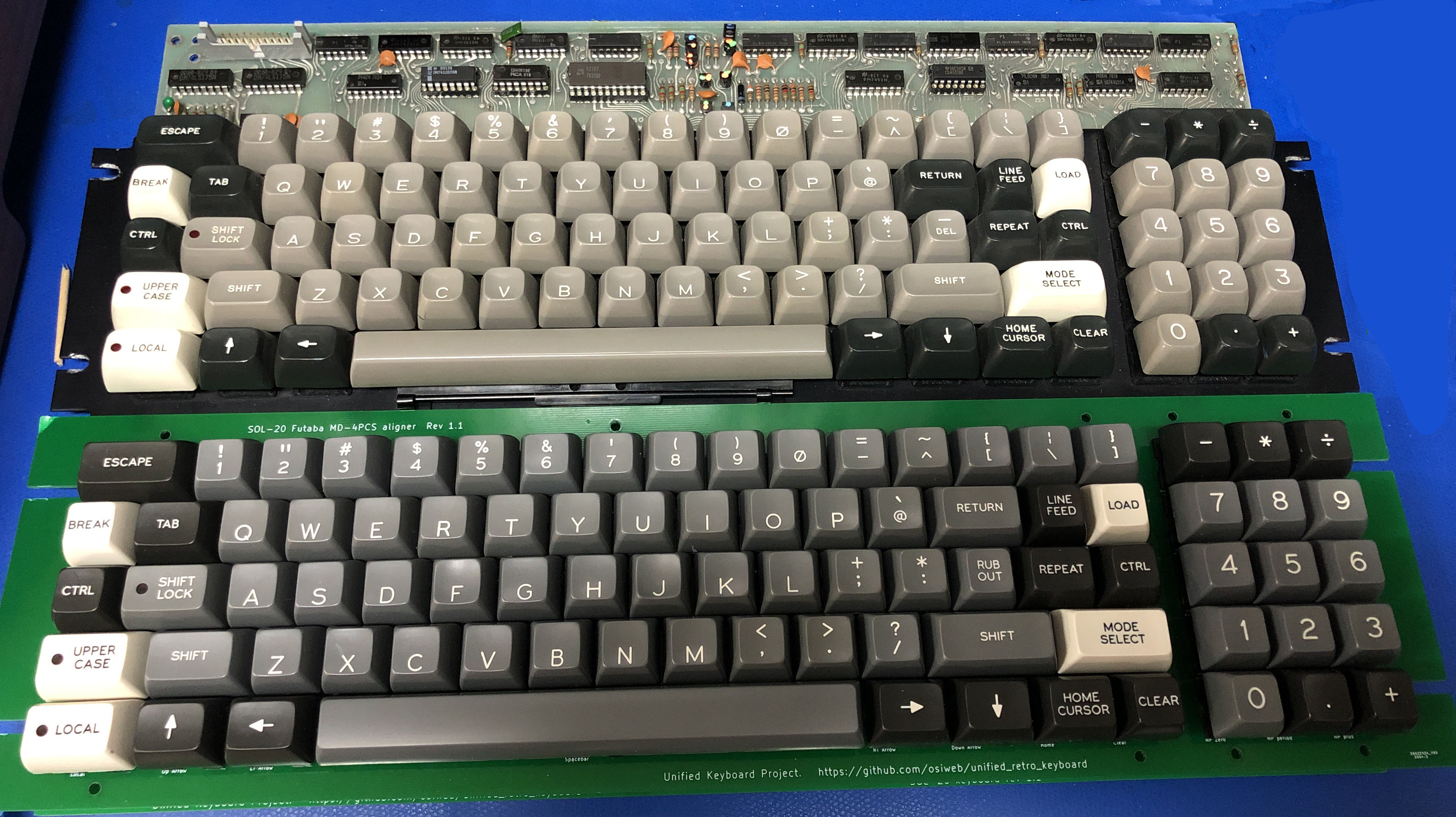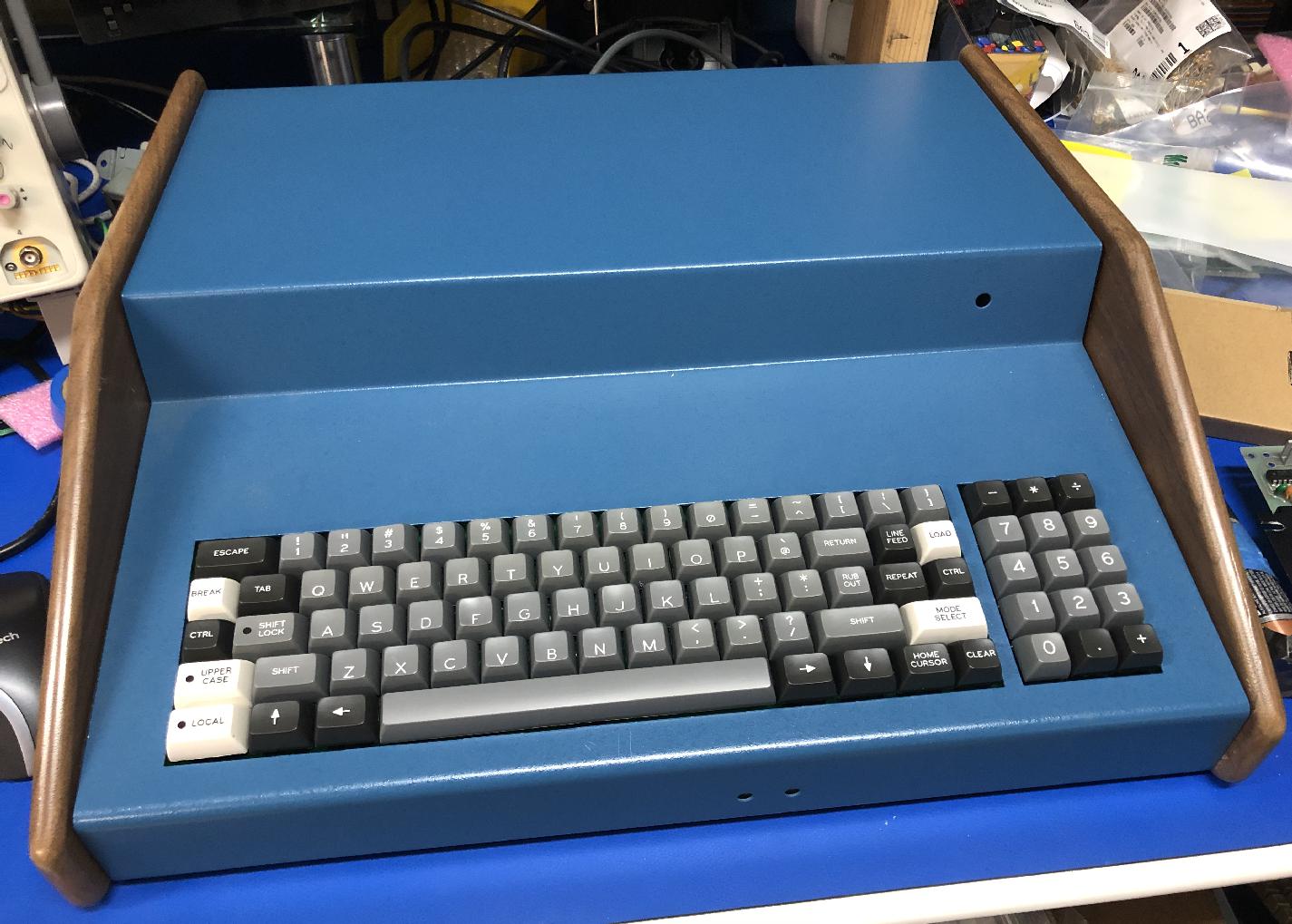- Use the dual footprints for futaba / cherry keys - Include a diode for every key (dual SMT/TH options) - Add stabilizers to the spacebar - Add cherry and futaba aligner plates - Add SMT resistor option - Add unified retro keyboard text
SOL keyboard
This keyboard replicates the keyboard on the SOL-20.
This keyboad matrix works with one of the add-on ASCII encoders from this project, which must be separately built or acquired.
This keyboard has a sibling Sol-20 keyboard with integrated encoder (here). The two keyboards are identical except for the following differences:
-
The integrated version places the connector closer to the main board keyboard socket, so the original cable fits more easily.
-
This non-integrated version requires a piggy-back encoder board. When installing in a Sol-20, this piggyback board must be mounted on the right side of the keyboard, and connected with a cable, to avoid mechanical interference from the Sol main board.
-
The piggy-back encoder is more flexible for use with other machines, via the Apple-1 and Apple-2 sockets, and two different user-configurable headers.
-
The piggy-back encoder also includes a UART interface.
The keyboard is designed using KiCad in order to be the most useful for anybody wishing to modify the keyboard for more specific uses, or to add to the project.
The keyset for the SOL-20 keyboard consists of the Unified Keyboard Project classic ASCII keyset, with a special SOL-20 add-on keyset.
Differences from the original include:
-
The original keyboard is a capacitive keyboard. This keyboard uses standard switches (either Cherry or Futaba).
-
The original keycaps have an 11 degree angled stem. It may be possible to find such keycaps, but I was unable to find any. It also may be possible to create 11 degree adapters. But this keyboard uses straight keycaps. I have tried both styles, and do not find a difference in typing comfort or speed, althought there is an aesthetic difference. There is s tiny bit of space between keys using straight keycaps, so an 11 degree adapter may not require any change to the layout.
-
The original uses UPPERCASE+REPEAT to reset the system. For technical reasons, this version uses CTRL+MODE_SELECT to RESET the system.

